|
Archive for the 'Uncategorized' Category
Monday, January 17th, 2011
If you’ve got a birthday present for someone who loves being out in the garden then look at this selection of gifts that can help them enjoy the garden more after the hard work is done! A pretty garden can be enjoyed long into the evenings in the summer.
Firebox just added these new products ideal for gardener’s birthday presents! Some nice little treats for making the garden pretty!
Solar Lanterns (6 Pack) £29.99
Add a touch of glimmer-glamour to garden soirees and wave goodbye to candles and cables with these solar-powered lanterns. Featuring concertina-style nylon shades and automatic dusk sensors, Solar Lanterns are like mini Tinkerbells minus the annoying smirk.
Read the rest of this entry »
Filed: Uncategorized | Tagged: firebox, garden gifts
Monday, August 23rd, 2010
Jersey Plants Direct sell some amazing plants that offer great colour and great value. Here’s our top 5 Winter bedding plants!
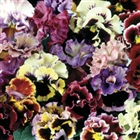 Pansy Can Can Pansy Can Can
50 Plants +20 FREE for only £9.99
Fantastic value – you get 70 plants in total for under £10 and it’s free delivery. These plants are also garden ready and ideal for those who don’t want the messing about of growing on. They’re ready to go straight in to the ground! Plant these beautiful fluffy pansys in tubs, baskets, in garden borders – everywhere! They are perfect for providing your garden with great colour all autumn and winter through to the spring. Perfect plants that are cute to look at too – our absolute favourite is the Can can! It’s a pretty mix of colourings including white with blue face, strawberry sundae, lilac picotee, velvet picotee, cherry rose, black moon, blue, blue black, red leopard and crimson picotee.
Pansys provide great colour and don’t need full sun so are perfect for that shady border you never knnow quite what to do with it.
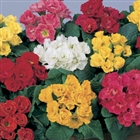 Primrose Rosebud Primrose Rosebud
50 Plants +20 FREE for only £9.99
These lovely bedding plants will be despatched from mid August to October.
Again these are garden ready so you can just plant them out when they arrive. These are very pretty flowers with an unusal flower type that’s as the name suggests more like a rosebud than a standard primrose flower. Primroses are lovely flowers – they’ll work hard producing colour in your garden in the autumn and winter and give you colourful plants until late spring.
Lots of bright colours including golden shades, apricot shades, purple, red shades, rose, white and yellow that will make a great display in your garden
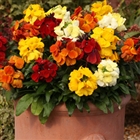 Wallflower Fortune Wallflower Fortune
50 Plants +20 FREE for only £9.99 including free delivery
These plants are scented which is fantastic for your winter garden!
They’re a F1 variety which means they’ll always be exactly as the grower intended. The colours are a mix of yellows, primrose, red, scarlet and bronze, which will enhance your winter bedding schemes.
These garden ready wallflowers will arrive at your home between mid August and October.
Wallflowers make great plants for the winter bedding borders as they’ll grow to about 30cm tall making them one of the taller bedding plants you’ll have. They look amazing and are very pretty. Being scented makes them stand out and you’ll enjoy being outside in the garden during the winter when you get to smell them!
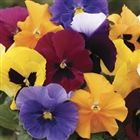 Pansy Grande Fragrance Pansy Grande Fragrance
50 Plants +20 FREE including delivery for only £9.99
Fantastic big flowers with colours include primrose, yellow blotch, white blotch, porcelain blue, orange and red blotch
Scented pansys with huge flowers will make a stunning vista in your garden this winter. These lovely bedding plants are garden ready plug plants so can be just planted out in their final positions. Plant up your winter flower tubs and hanging baskets with some of these lovely bright flowers.
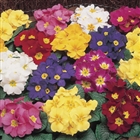 Primrose Valiant Primrose Valiant
50+20 FREE including free delivery for only £11.99
These brighly coloured flowers are fully frost hardy and specifically bred for winter performance. Great range of colours mean they’ll brighten up the dullest border and can be grown in partial shade too – flowers are blue, primrose, white, red, rose and yellow.
These are a traditional style primrose and will look great in tubs or baskets near your door to brighten your way home as well as in the garden flower borders. They are garden ready plug plants so can be planted straight away without having to grow them on. They’ll achieve a height of 10 to 15cm and a spread of approx 10cm
Garden ready plug plants for Winter at Jersey Plants Direct
Filed: Jersey Plants, Uncategorized | Tagged: garden ready plug plants, winter bedding plants
Tuesday, May 4th, 2010
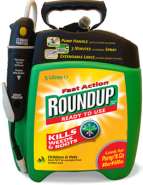
The Roundup’s
Pump N’ Go Sprayer is 5L of weedkiller in an easy use container. It’s certainly
a weighty bit of kit in your war against weeds. It weighs 5kg when full, which
is comparable to a full watering can that you might be using to apply different
weed killers. It is an impressive item though.
To assembly you need to cut the two clips that keep it secure – when you cut
the one on the handle pay attention to where the pump handle is turned – when
it’s turned in right you can use it as the handle but when it’s free from the
clip it sits under you will find it acts as the pump. Once you see this it’s
very obvious! You then undo the clip on the wand and unwind the pipe from the
holder. The wand is easy to fully assemble – you press the small orange button
on it and pull out the nozzle until it’s full extended and it clips into it’s
hole.
When you finish with the weedkiller ensure you put this wand back into it’s
original position as this is what stops kids from playing with it, or it accidentally
discharging. Apply the tube to the container and you’re ready to go. This clipping
on of the nozzle tube is reversible but only under force. There’s no need to
take it off either. Refills are done through the cap on which the pump and handle
which unscrews.
Sensible but normal weed
killer precautions apply. Wear gloves and shoes you can rinse off if you
get any on. You don’t want to walk this powerful weedkiller over the lawn! Also
don’t do this on a windy day. You’re much more likely to get spray going where
you don’t want it to. So don’t damage your plants, or your neighbour’s plants
by using this on a very windy day. Ideally a calm dry day is what you need.
With it all set up you need to pump the handle about 20 times. This will give
you 3 minutes of spraying time. It’s not hard to pump either which was a pleasant
suprise. Having used some other pump action containers this was the easiest
by far. If you like you can put the bottle on the floor and still spray using
the nozzle so you don’t have to worry about carrying it – just pick it up and
move it along as you go. The spray is allowed out only when you press the release.
This release is very easy to control. This means you can spray only the weeds
you need spraying rather than having to spray constantly along.
You get a high level of control with the application. This saves you money
as you don’t waste any weedkiller! I did all the weed spraying I needed from
one lot of pumping. This makes it very quick and simple to use with no hassle
at all. The nozzle is put back into it’s handle and hung on the clip and then
tubing goes back on to it’s hanger too making it all very tidy to put away.
The container needs the pressure taking off before you put it away – do this
easily by undoing the lid a little and then retightening.
Roundup’s
Pump N’ Go Sprayer is very easy to use. The wand means you can stand up
and still be accurate with the spraying. It’s trigger is very responsive and
this makes for less waste. The whole package is very neat and you will effectively
and efficiently be able to spray all the weeds in your garden. Advantages are
that the spraying is effortless, there’s no constant pumping like you get on
some other spray systems. You don’t have to bend down – you just point the wand
so it’s less back breaking than weeding! And as it’s a spray you can get the
weeds you don’t want to pull up because of where they are! It’s suitable for
weeding along the edges of your paths, on your patios, around the egde of your
house and along fences. It’s especially useful if you have areas that you can’t
reach to weed as you can just spray the weeds and this will kill them. You could
in theory use it to target the dandelions on your lawn – it is controllable
enough to only get them – you’d just have to be careful not to tred on any you’ve
sprayed and then move the weedkiller on to your lawn.
Filed: Uncategorized | Tagged: review, Roundup's Pump N' Go Sprayer
Monday, February 22nd, 2010
An interesting campaign which could bag you a packet of free wild flower seeds!
To mark National Science and Engineering week’s ‘What on Earth’ campaign which is raising awareness of UK plants and animals facing habitat destruction and homelessness, free wildflower seeds are on offer on www.whatonearth.org.uk
It couldn’t be simpler or more fun. All you need to do is upload a snap of something you don’t recognise that you spot in your garden, to www.whatonearth.org.uk , and you will receive native varieties of wildflower which will encourage greater biodiversity in your back garden or flower box.
The aim of ‘what on earth’ is to spot, collect and identify as many species as possible over the course of the week, painting a fascinating picture of UK wildlife for us all to observe and enjoy. Organised in partnership with The Open University’s iSpot website, NSEW’s specialists from all fields of natural science will examine, identify and catalogue as many finds as they can over the course of the week and beyond.
That’s not all, a green roof will be awarded to a school in the area which has shown most support for National Science & Engineering Week’s ‘What on Earth’ campaign and uploaded the most pictures. So whether you are an avid nature watcher or you just happen to find something unusual crawling around in your garden take a picture and submit it towww.whatonearth.org.uk
So encourage your friends to take part in this scheme too! Just get out there and take a photo of the interesting stuff going on in your garden. Whether it’s a picture of the birds, the fox, the green shoots starting to sprout up through the cold soil, or buds on a tree…
Filed: Uncategorized | Tagged: free seeds
Wednesday, January 27th, 2010
We are so used to the myriads of flowers available in florists all year round, but sometimes we forget what English flowers are available during the spring.
The first flowers of the year are usually snowdrops, these brave little tiny white flowers pushed through in the coldest months. They unlike many other bulb flowers need to be bought “in the Green”. This means buying them whilst they still have stems. Virtually all of the bulb plants can be bought as just bulbs. It does take some planning to get the bulbs planted and in the grounds early enough for them to have a good flowering season. However once they are in there they stay. It takes many years before the bulbs become overcrowded and may require some help.
A sign that bulbs or overcrowded is when they don’t flowers much, and they have a lot of leaf overlarge compact area but very few flowers. If this happens to bulbs, then you should dig them up and separate them out. Replant them in much smaller groups. You may find you have lots of bulb should cannot use, pass this on to neighbours and friends. Do not find compost bulbs, as some of the more persistent full disclosure in your compost bin.
Daffodils are one of the flowers that indicate spring to most people. Their cheery bright heads of joyful, and will bring cheer and brightness to all gardens. There are a huge number of righties with different types of head, different colours of petal, and different sized flowers. There are tiny flowers are very cute, these look great in pots. There are ruffled varieties that have many flowers of tightly contacted petals. The colours vary from palest yellows to bright orange almost red colours.
Most bulbs need to be left until the foliage has died down. A sprinkling of general fertiliser once a year can help these plants. Some bulbs like tulips should be dug up and stored, to be replanted later again. Bluebells are very pretty and probably one of the most dominant bulbs you can buy. Once you have bluebells in your garden will always have bluebells in your garden. They seem to grow quickly and spread widely. They are however incredibly pretty and if inter-planted with other things your garden will look lovely all year round.
Filed: Uncategorized | Tagged: spring bulbs
Sunday, November 15th, 2009
What creatures do you get in your garden? We’ve had lots of wildlife in our garden over the year and it’s strange the things you take photos of. I’ve got photos of some pretty speckled slugs and of a jay!
 Jay in garden
If you haven’t already started feeding the birds then now is the time. Garden Bird have a great selection of food and feeders. I’ve discovered that stringing peanuts in a shell on a string I can tempt the Jay into the garden. If you’ve got squirrels then you might need to look at squirrel proof feeders as our local squirrel has learnt how to tip the seed out of the bird feeders!
You can give the birds lots of scraps too, from fat off meat, bread, potatoes (cooked) and biscuit and cake crumbs.
This is actually a leopard slug and is very different to the usual ones you might have in your garden.
 Slug
Why not take a photo of the next wildlife that visits your garden?
We’ve had foxes sitting in the rare bits of sunshine we’ve had recently, lots of butterflies on the buddhlea and lots of lady birds appearing over the last few weeks, presumably coming into the house for somewhere warm to sleep for the winter!
Filed: Uncategorized | Tagged: feed birds, wildlife in the garden
Tuesday, August 11th, 2009
Not from me this time, but a story I’ve just seen on the BBC about a huge meat eating plant! You know venus fly traps and pitcher plants catch flies and other small insects, well they have recently discovered this huge plant in the Philipines which is a new special – see the bbc news story here
Plus also on the BBC news site this week a report about waiting lists for Allotments around the UK. In one London Borough there is a 40 year waiting list for an allotment. That’s pretty shocking news but not a complete surprise to anyone one of the thousands of people on the allotment waiting lists. More should really be done to encourage people to grow their own,.
Filed: Uncategorized | Tagged: allotment
Thursday, August 6th, 2009
Everyone should be planting Bee Friendly plants and flowers.
You can even have a bee house in your garden (Not a hive!) Bee products at Crocusg(74608)a(1658606))
Which includes some bee nesting boxes and pipes for bees to live in – specially made houses designed to meet wild bees needs.
There’s a huge list recommended by the RHS available at Crocus – Bee Friendly wildflower plug plants
Encourage your neighbours to plant more flowers to help too, or even email your local council and ask them what they can do to help with the bees needs? If too many bees die then it’s a food disaster for humans – not just because we eat honey but because bees are essential for polination of our food crops!
If you’ve only got a lawn, then leave it a bit longer and let the buttercups, dandelions and clover grow! Once they flower the bees will come and spend hours buzzing about. Recently our grass verges were full of white clover flowers and the number of bees was incredible!
Annuals – these are easy to grow and can be sown directly in the ground. Try some in pots and pass them on to neighbours too to ensure there’s loads of flowers available for the bees.
Borage (Borago officinalis)
Buckwheat (Fagopyrum esculentum)
Californian poppy (Eschscholzia californica)
Candytuft (Iberis species)
China aster (Callistephus chinensis)
Clarkia (Clarkia species)
Cornflower (Centaurea cyanus)
Cosmos (Cosmos bipinnatus)
Forget-me-not (Myosotis species)
Gilia capitata
Godetia (Clarkia species)
Heliotrope (Heliotropium cultivars)
Love-in-a-mist (Nigella damascena)
Mignonette (Reseda odorata)
Nemophila menziesii
Phacelia species
Poached egg plant (Limnanthes douglasii)
Sunflower (Helianthus annuus)
Sweet sultan (Amberboa moschata)
Zinnia (Zinnia elegans)
Biennials
French honeysuckle (Hedysarum coronarium)
Hollyhock – single flowered (Alcea rosea)
Honesty (Lunaria annua)
Wallflower (Erysimum species)
Herbaceous perennials
Agastache foeniculum
Alyssum species
Anchusa azurea
Arabis species
Aubrieta species
Bellflowers (Campanula species)
Catmints (Nepeta species)
Cranesbill (Geranium species)
Dahlia – single-flowered species and cultivars
Eryngium species
Fleabane (Erigeron species)
Geum species
Globe artichoke (Cynara cardunculus)
Globe thistle (Echinops ritro)
Golden rod (Solidago species)
Gypsophila paniculata
Helenium species
Hellebores (Helleborus species)
Ice plant (Sedum spectabile)
Jacob’s ladder (Polemonium caeruleum)
Japanese anemone (Anemone × hybrida)
Lambs’ ears (Stachys byzantina)
Leopard’s bane (Doronicum species)
Liatris spicata
Michaelmas daisies (Aster species)
Monarda punctata
Oriental poppy (Papaver orientale)
Persicaria amplexicaule
Rudbeckia species
Salvia x superba
Scabious (Scabiosa species)
Sea hollies (Eryngium species)
Sidalcea malviflora
Thrift (Armeria maritima)
Verbena bonariensis
Veronica longifolia
White horehound (Marrubium vulgare)
Bulbs and corms
Allium species
Autumn crocus (Colchicum species)
Crocus species
Fritillaries (Fritillaria species)
Glory of the snow (Chionodoxa luciliae)
Grape hyacinth (Muscari species)
Hyacinth (Hyacinthus orientalis)
Siberian squill (Scilla siberica)
Snowdrops (Galanthus species)
Snowflakes (Leucojum and Acis species)
Winter aconite (Eranthis hyemalis)
Vegetables and culinary herbs
Asparagus
Brassicas left to flower
Broad bean
Hyssop (Hyssopus officinalis)
Marjoram (Origanum species)
Marrow and other cucurbits
Mint (Mentha species)
Rosemary (Rosmarinus officinalis)
Runner bean
Sage (Salvia officinalis)
Thyme (Thymus species)
Trees and shrubs – surprisingly maybe there’s a large number of trees which bees love the flowers of!
Almond (Prunus dulcis)
Apple, including ornamental Malus
Barberry (Berberis species)
Blackberry
Blackthorn (Prunus spinosa)
Boston ivy (Parthenocissus tricuspidata)
Box (Buxus sempervirens)
Brooms (Cytisus species)
Caryopteris
Ceanothus species (spring-flowering types)
Cherry, including single-flowered ornamental types
Cherry laurel (Prunus laurocerasus)
Christmas box (Sarcococca species)
Clematis cirrhosa
Cotoneaster species
Currants, red, black, white and ornamental Ribes species
Daisy bush (Olearia species)
Daphne mezereum
Dogwood (Cornus alba)
Enkianthus campanulatus
Escallonia hybrids
False acacia (Robinia pseudoacacia)
Firethorn (Pyracantha cultivars)
Fuchsia species
Gaultheria shallon
Gooseberry
Gorse (Ulex species)
Hawthorns (Crataegus species)
Hazel (Corylus avellana)
Heather (Calluna vulgaris)
Heathers (Erica species)
Hebe species
Holly (Ilex aquifolium)
Horse chestnuts (Aesculus species)
Hypericum species
Indian bean tree (Catalpa bignonioides)
Ivy (Hedera helix)
Japanese quince (Chaenomeles speciosa and C. x superba)
Judas tree (Cercis siliquastrum)
Koelreuteria paniculata
Lavender (Lavandula species)
Lime (Tilia species) – note Tilia tomentosa ‘Petiolaris’ nectar is sometimes harmful to bumblebees
Loganberry
Lonicera × purpusii
Mahonia aquifolium
Maples (Acer species)
Mountain ash (Sorbus aucuparia)
Orange ball buddleia (Buddleja globosa)
Pear and ornamental Pyrus species
Perovskia atriplicifolia
Plums
Potentilla fruticosa
Raspberry
Rock rose (Helianthemum species)
Rose – single-flowered species types (Rosa species)
Snowberry (Symphoricarpos species)
Strawberry tree (Arbutus unedo)
Sycamore (Acer pseudoplatanus)
Sweet bay (Laurus nobilis)
Tetradium daniellii
Virginia creeper (Parthenocissus quinquefolia)
Weigela florida and hybrids
Willows, male forms, especially goat willow (Salix caprea)
Wild flowers
Bindweed (Convolvulus arvensis)
Birdsfoot trefoil (Lotus corniculatus)
Burdock (Arctium lappa)
Charlock (Sinapis arvensis)
Chickweed (Stellaria media)
Clovers (Trifolium species)
Coltsfoot (Tussilago farfara)
Dandelion (Taraxacum officinale)
Devil’s bit scabious (Succisa pratensis)
Field scabious (Knautia arvensis)
Figworts (Scrophularia species)
Hemp agrimony (Eupatorium cannabinum)
Hogweed (Heracleum sphondylium)
Horseshoe vetch (Hippocrepis comosa)
Knapweeds (Centaurea species)
Knotgrasses (Polygonum species)
Lesser celandine (Ranunculus ficaria)
Mallows (Malva species)
Marsh marigold (Caltha palustris)
Meadow clary (Salvia pratensis)
Meadowsweet (Filipendula ulmaria)
Poppies (Papaver species)
Purple loosestrife (Lythrum salicaria)
Red deadnettle (Lamium purpureum)
Rose bay willowherb (Epilobium angustifolium)
Teasel (Dipsacus fullonum)
Thistles (Cirsium species)
Toadflax (Linaria vulgaris)
Traveller’s joy (Clematis vitalba)
Valerian (Valeriana officinalis)
Viper’s bugloss (Echium vulgare)
White bryony (Bryonia dioica)
White melilot (Melilotus alba)
Yellow melilot (M. officinalis)
Yellow trefoil (Trifolium dubium)
List of Plants recommended by the RHS
Annuals
![]() Borage (Borago officinalis) Borage (Borago officinalis)
Buckwheat (Fagopyrum esculentum)
Californian poppy (Eschscholzia californica)
Candytuft (Iberis species)
China aster (Callistephus chinensis)
Clarkia (Clarkia species)
Cornflower (Centaurea cyanus)
Cosmos (Cosmos bipinnatus)
Forget-me-not (Myosotis species)
Gilia capitata
Godetia (Clarkia species)
Heliotrope (Heliotropium cultivars)
Love-in-a-mist (Nigella damascena)
Mignonette (Reseda odorata)
Nemophila menziesii
Phacelia species
Poached egg plant (Limnanthes douglasii)
Sunflower (Helianthus annuus)
Sweet sultan (Amberboa moschata)
Zinnia (Zinnia elegans)
Biennials
French honeysuckle (Hedysarum coronarium)
Hollyhock – single flowered (Alcea rosea)
Honesty (Lunaria annua)
Wallflower (Erysimum species)
Herbaceous perennials
![]() Agastache foeniculum Agastache foeniculum
Alyssum species
Anchusa azurea
Arabis species
Aubrieta species
Bellflowers (Campanula species)
Catmints (Nepeta species)
Cranesbill (Geranium species)
Dahlia – single-flowered species and cultivars
Eryngium species
Fleabane (Erigeron species)
Geum species
Globe artichoke (Cynara cardunculus)
![]() Globe thistle (Echinops ritro) Globe thistle (Echinops ritro)
Golden rod (Solidago species)
Gypsophila paniculata
Helenium species
Hellebores (Helleborus species)
Ice plant (Sedum spectabile)
Jacob’s ladder (Polemonium caeruleum)
Japanese anemone (Anemone × hybrida)
Lambs’ ears (Stachys byzantina)
Leopard’s bane (Doronicum species)
Liatris spicata
Michaelmas daisies (Aster species)
Monarda punctata
Oriental poppy (Papaver orientale)
Persicaria amplexicaule
Rudbeckia species
Salvia x superba
Scabious (Scabiosa species)
Sea hollies (Eryngium species)
Sidalcea malviflora
Thrift (Armeria maritima)
Verbena bonariensis
Veronica longifolia
White horehound (Marrubium vulgare)
Bulbs and corms
![]() Allium species Allium species
Autumn crocus (Colchicum species)
Crocus species
Fritillaries (Fritillaria species)
Glory of the snow (Chionodoxa luciliae)
Grape hyacinth (Muscari species)
Hyacinth (Hyacinthus orientalis)
Siberian squill (Scilla siberica)
Snowdrops (Galanthus species)
Snowflakes (Leucojum and Acis species)
Winter aconite (Eranthis hyemalis)
Vegetables and culinary herbs
Asparagus
Brassicas left to flower
Broad bean
Hyssop (Hyssopus officinalis)
Marjoram (Origanum species)
Marrow and other cucurbits
Mint (Mentha species)
Rosemary (Rosmarinus officinalis)
Runner bean
Sage (Salvia officinalis)
Thyme (Thymus species)
![]() Trees and shrubs Trees and shrubs
Almond (Prunus dulcis)
Apple, including ornamental Malus
Barberry (Berberis species)
Blackberry
Blackthorn (Prunus spinosa)
Boston ivy (Parthenocissus tricuspidata)
Box (Buxus sempervirens)
Brooms (Cytisus species)
Caryopteris
Ceanothus species (spring-flowering types)
Cherry, including single-flowered ornamental types
Cherry laurel (Prunus laurocerasus)
Christmas box (Sarcococca species)
Clematis cirrhosa
Cotoneaster species
Currants, red, black, white and ornamental Ribes species
Daisy bush (Olearia species)
Daphne mezereum
Dogwood (Cornus alba)
Enkianthus campanulatus
Escallonia hybrids
False acacia (Robinia pseudoacacia)
Firethorn (Pyracantha cultivars)
Fuchsia species
Gaultheria shallon
Gooseberry
Gorse (Ulex species)
Hawthorns (Crataegus species)
Hazel (Corylus avellana)
Heather (Calluna vulgaris)
Heathers (Erica species)
Hebe species
Holly (Ilex aquifolium)
Horse chestnuts (Aesculus species)
Hypericum species
Indian bean tree (Catalpa bignonioides)
Ivy (Hedera helix)
Japanese quince (Chaenomeles speciosa and C. x superba)
Judas tree (Cercis siliquastrum)
Koelreuteria paniculata
![]() Lavender (Lavandula species) Lavender (Lavandula species)
Lime (Tilia species) – note Tilia tomentosa ‘Petiolaris’ nectar is sometimes harmful to bumblebees
Loganberry
Lonicera × purpusii
Mahonia aquifolium
Maples (Acer species)
Mountain ash (Sorbus aucuparia)
Orange ball buddleia (Buddleja globosa)
Pear and ornamental Pyrus species
Perovskia atriplicifolia
Plums
Potentilla fruticosa
Raspberry
Rock rose (Helianthemum species)
Rose – single-flowered species types (Rosa species)
Snowberry (Symphoricarpos species)
Strawberry tree (Arbutus unedo)
Sycamore (Acer pseudoplatanus)
Sweet bay (Laurus nobilis)
Tetradium daniellii
Virginia creeper (Parthenocissus quinquefolia)
Weigela florida and hybrids
Willows, male forms, especially goat willow (Salix caprea)
![]() Wild flowers Wild flowers
Bindweed (Convolvulus arvensis)
Birdsfoot trefoil (Lotus corniculatus)
Burdock (Arctium lappa)
Charlock (Sinapis arvensis)
Chickweed (Stellaria media)
Clovers (Trifolium species)
Coltsfoot (Tussilago farfara)
Dandelion (Taraxacum officinale)
Devil’s bit scabious (Succisa pratensis)
Field scabious (Knautia arvensis)
Figworts (Scrophularia species)
Hemp agrimony (Eupatorium cannabinum)
Hogweed (Heracleum sphondylium)
Horseshoe vetch (Hippocrepis comosa)
Knapweeds (Centaurea species)
Knotgrasses (Polygonum species)
Lesser celandine (Ranunculus ficaria)
Mallows (Malva species)
Marsh marigold (Caltha palustris)
Meadow clary (Salvia pratensis)
Meadowsweet (Filipendula ulmaria)
Poppies (Papaver species)
Purple loosestrife (Lythrum salicaria)
Red deadnettle (Lamium purpureum)
Rose bay willowherb (Epilobium angustifolium)
Teasel (Dipsacus fullonum)
Thistles (Cirsium species)
Toadflax (Linaria vulgaris)
Traveller’s joy (Clematis vitalba)
Valerian (Valeriana officinalis)
Viper’s bugloss (Echium vulgare)
White bryony (Bryonia dioica)
White melilot (Melilotus alba)
Yellow melilot (M. officinalis)
Yellow trefoil (Trifolium dubium)
Filed: Uncategorized | Tagged: bee flowers, bee friendly garden, bees
Tuesday, July 28th, 2009
B&Q have everything you need for your garden. You can shop online for home delivery with B & Q or use their next day delivery service from their new service – B & Q Next Day

What do they sell for the garden? They have a fantastic garden section as you’ll know if you’ve ever gone round one of their enormous warehouses. They sell everything from garden lighting, to paving and hardcore sand and gravel, plants and seeds, plus loads of compost. They also have some brilliant stuff for making the most of your garden once you’ve made it look just right with a large choice of tables and chairs and other outdoor furniture. You can even buy a barbeque there! That way you can turn that garden into an outdoor room!
With a range of sheds and summer houses you can be sure that B&Q really do have everthing you might need. Their lawnmower range is also very good with some top brands there at bargain prices.
Filed: Uncategorized | Tagged: b&q, garden
Thursday, July 16th, 2009
There’s a news story I’ve just spotted about a woman getting in trouble for growing tomatoes!
The problem was she was growing them in the foyer of a communal building which is against fire regulations according to her council. She’s not been given an ASBO but a written warning about her behaviour.
Neath Port Talbot council’s head of housing and public protection, Robert Rees, said: “The housing service was contacted on behalf of another resident of the flats who is asthmatic and was concerned that the tomato plants in the public area were aggravating this condition.”
It’s an interesting idea to be growing things in communal space but obviously one that seems to have upset someone or made someone ill.
I can fully understand the problems there might be about unauthorised pots and plants in the foyer but it does seem in principal a good idea to make use of growing space !
The moral has to be, get permission if you’re putting plants anywhere other than your own property.
Filed: Uncategorized | Tagged: asbo, totaoes
|
|








 Pansy Can Can
Pansy Can Can  Primrose Rosebud
Primrose Rosebud Wallflower Fortune
Wallflower Fortune  Pansy Grande Fragrance
Pansy Grande Fragrance Primrose Valiant
Primrose Valiant 

